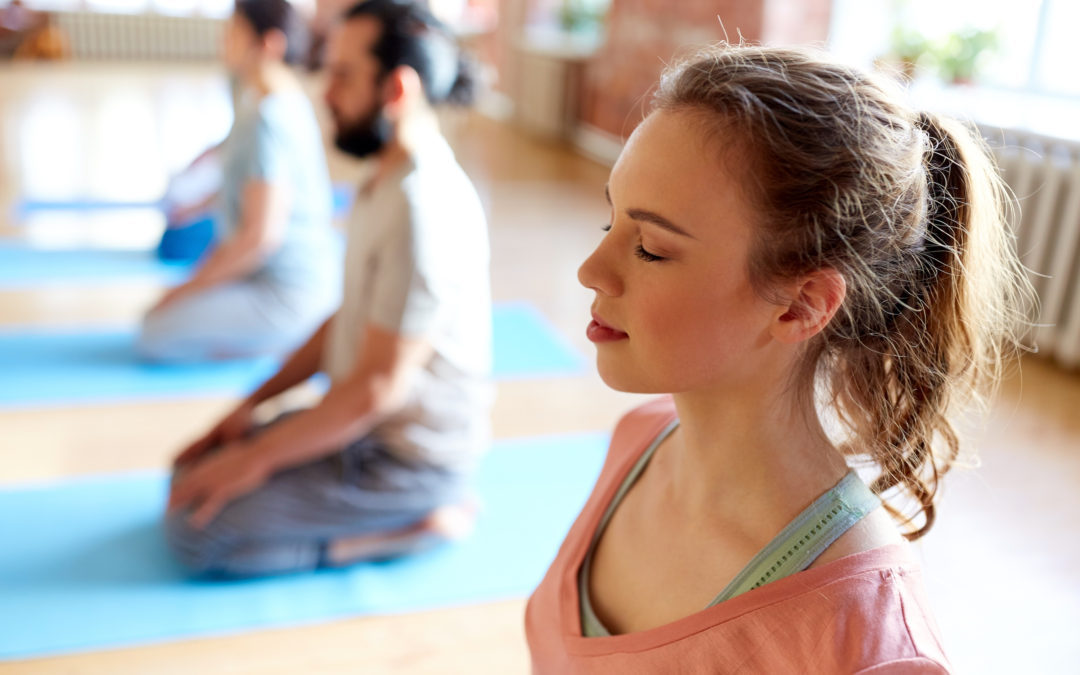“Stress is not a state of mind… it’s measurable and dangerous, and humans can’t seem to find their off-switch” according to Robert M. Sapolsky, a Stanford professor and expert on how our bodies respond to stress.
Think about what causes you stress? Most people have no problem coming up with a long list of items that cause them stress, from family and work to financial stressors. Now think about ways you actively de-stress. Often, this is a much shorter list.
If left unchecked, high stress levels can cause a variety of issues within our bodies. Continue reading to learn about how our body responds to stress and some simple breathing techniques to help lower your stress level.
Overview of how our body transports information
Before diving into how our body responds to stress, we must have a basic understanding of how information is moved throughout our body. The two primary ways we communicate and transport information within our body are the:
- Nervous system (nerves)
- Circulatory system (blood)
The main role of our nervous system is to gather and send information. The main role of our circulatory system is to move hormones, molecules, and nutrients through our body. Together these systems assess, interpret, and react to our every movement during the day to meet our basic needs and keep us out of danger.
The part of our nervous system that assesses and reacts to what we encounter is broken into two parts. The autonomic (involuntary) nervous system, and somatic (voluntary) nervous system. We have very little control over our autonomic nervous system. It is controlled by hormones. These hormones respond to our bodies needs and outside stressors to adjust the systems within our body accordingly.
For example, you see a big dog barking and running towards you. Immediately, your body interprets this as a potential threat. In reaction to the impending threat, your body sends hormones to your heart to increase its rate to pump more blood to your body, so you can react quickly. Since your body is primed for reaction, non-essential functions, like digestion, are stopped until the threat has passed.
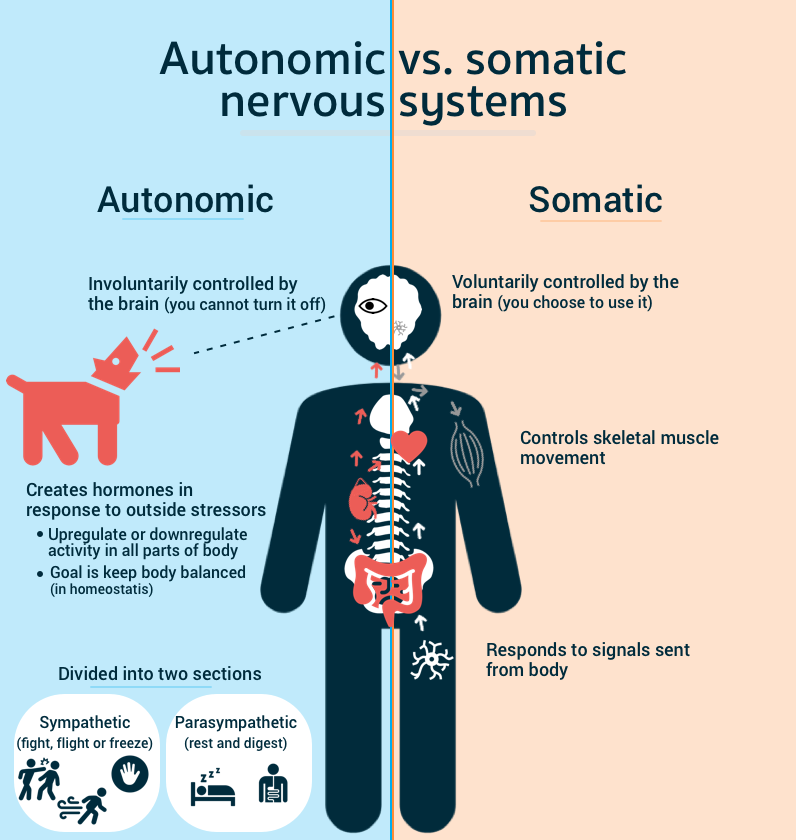
The autonomic nervous system is split into two sections, the sympathetic (fight, flight, or freeze) and parasympathetic (rest and digest) nervous system. We will explore more about how the stress response impacts these systems in the next section.
Our stress response
The two divisions of our autonomic nervous system cannot both be active at the same time. Think of these systems as a light switch. When one is ‘on’, the other is ‘off’. Our stress response stems from our sympathetic nervous system being ‘on’. The activation of this system causes the following responses to stress to happen within our body.
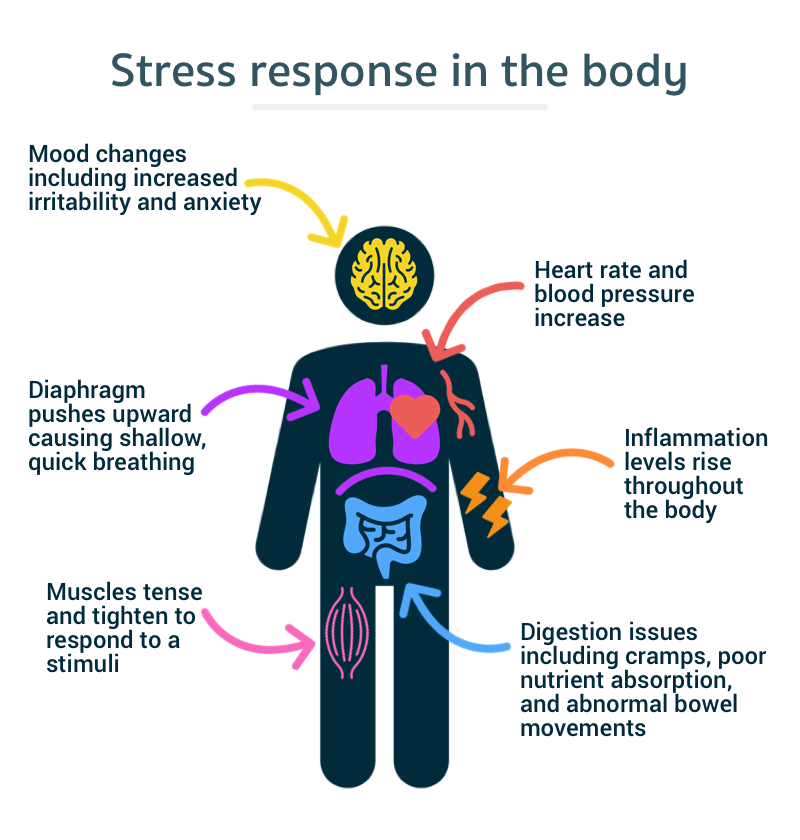
One of the easiest ways to reverse our stress response and de-stress is by turning ‘on’ our parasympathetic nervous system. Breathing techniques have been shown to be an easy, effective method of doing this.
How to de-stress using your breath
When we are stressed, we breathe quick, shallow, and barely exhale. To get out of stress by using our breath, we just need to breathe in a way that is opposite of how we do when we’re stressed. This includes any breathing techniques that elongate our exhale and encourage deep, full breaths. Here are our top three de-stressing breathing techniques that will help you turn ‘off’ your stress response and relax.
Belly breathing. Focus on moving your breath out of your chest and shoulders and into your belly to lower your stress level. Follow these steps for belly breathing.
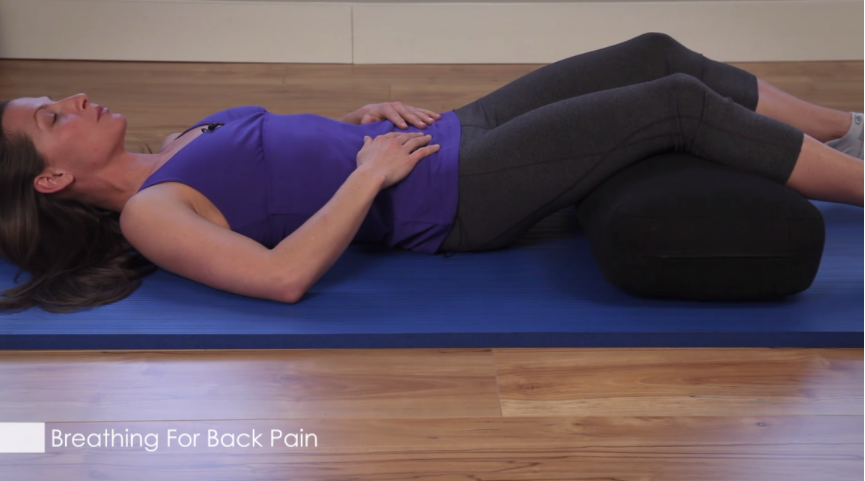
Tempo breathing. The goal of tempo breathing is to help you become more mindful of your inhaling and exhaling. Once you master this, begin slowly extending the duration of your inhales and exhales. Here are the three steps to begin tempo breathing.
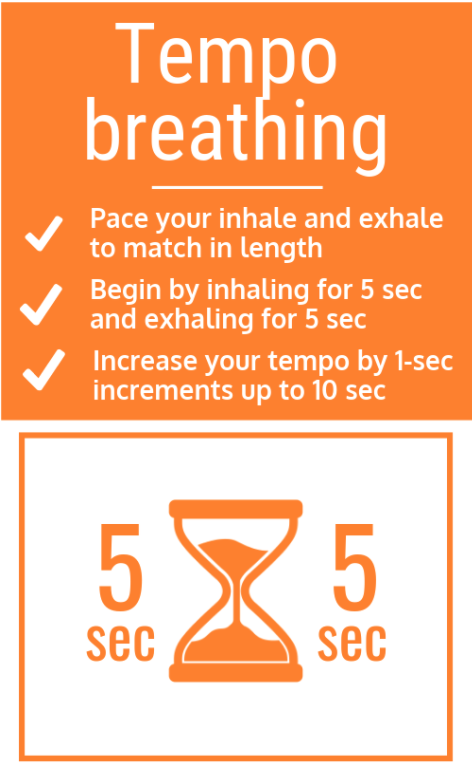
The square breathing technique. This technique will help to train you to hold your breath and extend your exhale. Follow these steps to begin using the square breathing technique.

Start de-stressing today
Life is stressful. Using your breath to de-stress can help you better manage stress and improve your health. Use these techniques for 5-10 minutes throughout your day will help you feel more relaxed.
If you have any questions about these techniques, let our Telespine Health Coaches know. Contact us for more information.
Resources
Sapolsky RM. Why Zebras Don’t Get Ulcers: the Acclaimed Guide to Stress, Stress-Related Diseases, and Coping. New York: Henry Holt and Co.; 2004.
Varvogli L, Darviri C. Stress management techniques: evidence-based procedures that reduce stress and promote health. Health Science Journal. 2011;5(2):74-89.
Perciavalle V, Fecarotta P, et al. The role of deep breathing on stress. Neurological Sciences. 2017;38(3):451-458. doi.org/10.1007/s10072-016-2790-8.
